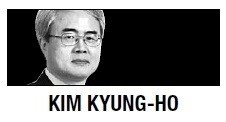Young Korean men and women now seem more ready than ever to find fault with what they see as the selfish attitude and behavior of the opposite sex. In a reflection of this atmosphere, many online communities have recently sprung up to provide a space for men to ridicule or vent their anger at women they deem to be insensible, and vice versa. Posts there are often filled with vitriol and even swear words, prompting their operators, who themselves are far from neutral and objective, to ask users not to be too vulgar in expressing themselves.

In these posts, the typical type of men and women subject to hatred are referred to as kimchi-nam (man) and kimchi-nyeo (woman). A kimchi-nam is portrayed as a man who is steeped in anachronistic patriarchal values and jittery about losing vested male rights and a kimchi-nyeo is described as a woman who avoids doing what she should while being attentive only to her rights and interests. Underlying these definitions are the increasing feeling of discrimination young Korean men and women have toward the opposite sex.
It may be against this backdrop of misogyny that the Korean edition of U.S.-based magazine Maxim recently stirred up controversy with its September issue, whose cover and corresponding feature could be seen as glamorizing sexual violence against women. Maxim Korea denied wrongdoing for weeks after the release of the issue. Only under mounting criticism did its editor-in-chief come forward Friday to offer an apology, but he still said the magazine never intended to idealize sexual assault.
He said proceeds from the sale of the controversial issue would be donated to nonprofit organizations working to enhance women’s rights and prevent sexual violence. His pledge still fell short of clearing the suspicion that the magazine might have attempted to pander to some male audiences antipathetic toward women with its troubling photos under the headline of “The real bad guy.”
What should be noted is that this spreading phenomenon of heterophobia here is not extended to foreigners. While Korean men and women are attacked by their opposite sex for being selfish and insensible, foreigners are often lauded as free of such traits.
It is also inappropriate to say the phenomenon is related to changing sexuality. No sexual claims -- like those advocating homosexuality as a superior lifestyle to heterosexuality – can be found or heard in the harsh exchanges of accusations.
As some researchers note, the heterophobia among Korean younger generations may be a twisted expression of their frustration with their relationship status due to deteriorating economic conditions. It can be an easy way of venting these frustrations to exaggerate and attack undesirable traits and insensible deeds of the opposite sex.
A survey by a local researcher showed the discrepancy between the hopes and realities of relationships with the opposite sex. Nearly 65 percent of unmarried men and 56.5 percent of unmarried women hoped to date a friend of the opposite sex. But the percentages of male and female respondents who actually did so fell to 33.8 percent and 35.6 percent, respectively. The figures went down by more than 10 percentage points among unmarried men and women who are not economically active.
Unmarried men also face unfavorable demographic conditions. Men in their 20s and 30s outnumber women their age, as they were born at a time when the preference for boys was high. A gloomy prospect is that about 15 percent of 20-something and 30-something Korean men will have little chance of marrying a Korean woman.
For their part, young Korean women still suffer from social and economic gender inequality. Female workers earn on average less than 70 percent of wages for male workers. The figure is the lowest among major industrialized countries. Over 12 years from 2000, the gender wage gap in Korea was narrowed by 2.9 percent, far below the average reduction of 4.4 percent for 34 member states of the Organization for Economic Cooperation and Development.
Certainly, the phenomenon of heterophobia is not unique within Korea, but the low level of tolerance in Korean society seems to exacerbate the problem. More worrying, the deepening heterophobia among younger people could undermine social cohesion and the growth potential of the country in the long run. It may not be ruled out that the phenomenon will lead to the spread of homosexual culture, affecting normal heterosexual people.
More attention should now be paid to how to prevent heterophobia from infecting more young men and women. It is hoped that thoughtful members of society will initiate online campaigns to write more favorably of the opposite sex. Children need to be taught at school through discussion and role-playing to better understand and become more considerate toward the opposite sex.
In this vein, efforts to increase youth employment should be made with a greater sense of urgency. Hopefully, better economic conditions may increase the possibility that unmarried men and women will find and get on good terms with a friend of the opposite sex. Moreover, if both spouses have jobs that can be sustained, experts note, they are inclined to have more children, helping raise Korea’s fertility rate, which remains among the lowest of major industrialized nations.
By Kim Kyung-ho
Kim Kyung-ho is an editorial writer for The Korea Herald. He can be reached at khkim@heraldcorp.com">khkim@heraldcorp.com. -- Ed.







![[KH Explains] How should Korea adjust its trade defenses against Chinese EVs?](http://res.heraldm.com/phpwas/restmb_idxmake.php?idx=644&simg=/content/image/2024/04/15/20240415050562_0.jpg&u=20240415144419)










![[Today’s K-pop] Stray Kids to return soon: report](http://res.heraldm.com/phpwas/restmb_idxmake.php?idx=642&simg=/content/image/2024/04/16/20240416050713_0.jpg&u=)